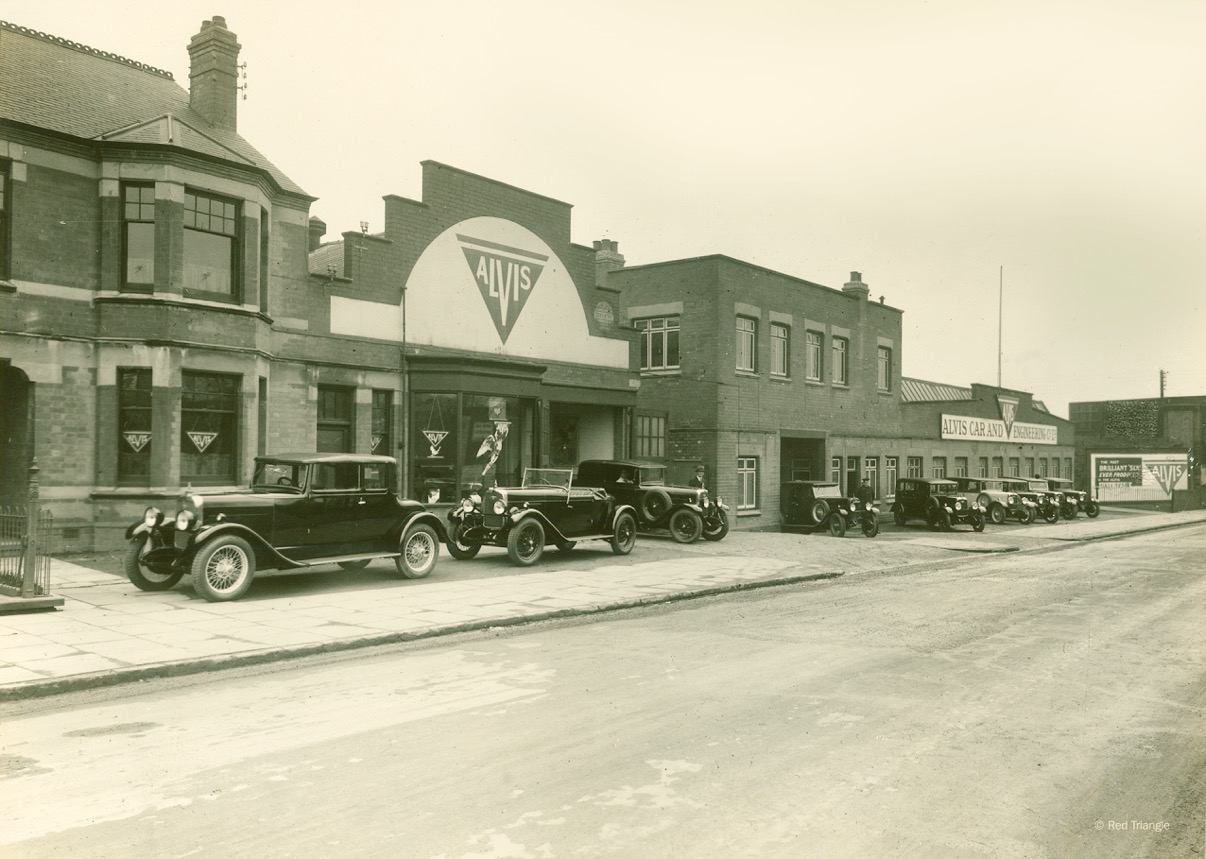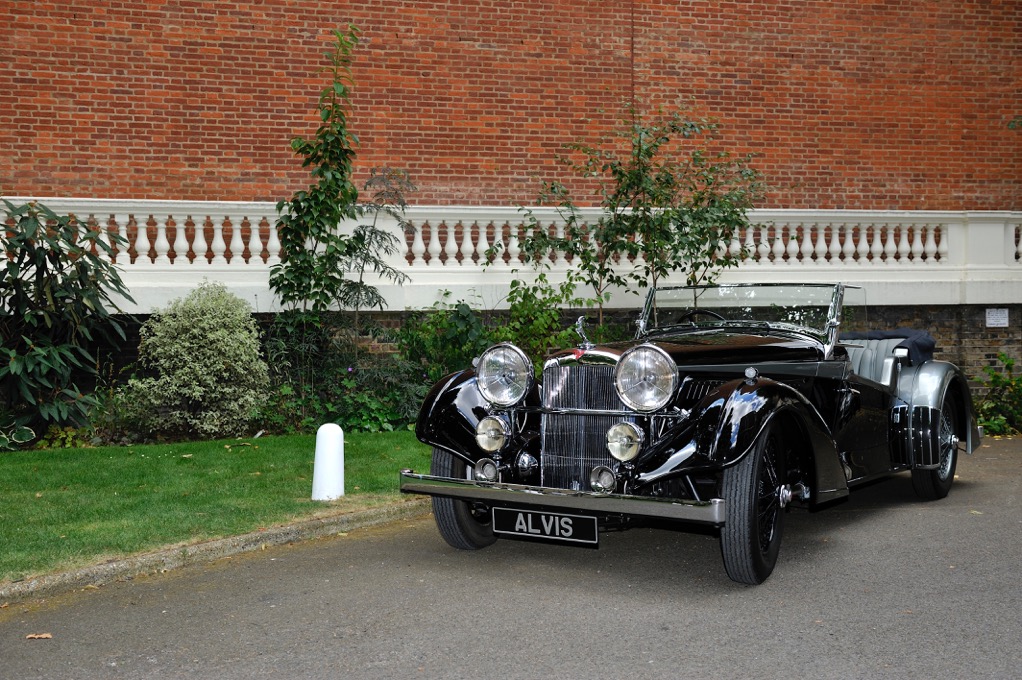A modern classic – Alvis Cars

The Alvis Car Company started in Coventry in 1919, designing supercars of the era, building aircraft engines and servicing military contracts. Then in 1968, sister company Red Triangle was formed to provide parts and servicing. bodyshop’s Padraig Mallett travelled to Kenilworth to find out more about this illustrious carmaker.
Upon our arrival at the Alvis headquarters, managing director Richard Joyce and bodyshop manager Frank Clowes, where there to welcome Mark and myself into the impressive showroom that lay before us. Filled from wall to wall with stunning classic cars that spanned Alvis’ history, some of which date back almost 100 years, when naval engineer T.G. John was at the helm and Alvis cars was one of Britain’s most innovative car manufacturers.
History
Richard kindly gave us a rundown on Alvis’ intriguing past and we were lucky to get to see some of the original car drawings and correspondence files that documented every detail of each car that left the factory. Richard explained to us how the first cars came equipped with capable 10/30 side-valve engines and that by 1923 the famous overhead-valve 12/50 was in production, becoming one of the most iconic vintage sports cars of all time with exhilarating performance and rugged reliability.
The best coachbuilders of the day worked on the cars creating bespoke coachwork, they were constructed using an Ash frame and the finest materials available. Over the years the cars continued to progress and following racing success at Le Mans in 1928 the company produced one of the world’s first front wheel drive production models with overhead camshaft and an optional supercharger.
Innovation
In the late 20’s to early 30’s, the depression led to increased sales of upmarket cars, as it was only the wealthy individuals who could afford to buy a car. Richard informed us that an Alvis car from this period would have cost twice the price of a Jaguar from the same period and you could buy a house in the equivalent of today’s money. The Speed models that were being produced during this era were quite advanced, with the Speed 20 for example, implementing a double drop chassis, giving it a lower profile and improved centre of gravity, making it extremely difficult for others cars of the time to compete with. Upgrades to the high tolerance six cylinder Alvis engines continued, the Speed 20’s engine capacity was increased by 10%, from a 2.5-litre to 2.7-litre, then a 3.5-litre engine was produced, which was paired with the world’s first synchromesh gearbox and with the introduction of independent suspension.
In 1936 a new factory was built, then in 1940 it suffered severe damage after the German Luftwaffe’s raid on Coventry. Car production was suspended for the duration of the war, only resuming during the latter part of 1946. After the war, car production resumed with the reliable and attractive four-cylinder TA14 model based on the pre-war 12/70. In 1950 a new chassis with a 3-litre six-cylinder engine was announced and this became the basis of all the remaining Alvis models. The new model was called the TA21. Production of Alvis cars continued through the 50’s and 60’s right up until the last car was produced in 1966. Then in 1968 all of Alvis’ car interests were relocated to Kenilworth along with the complete stock of spares, nearly 22,000 Car Records and over 50,000 works drawings, technical data sheets and correspondence files, and as Red Triangle they have continued to provide support for passenger car owners to the present day.
Contrast
When the tour of the spectacular showroom finished, we were invited into the heart of the operation, the Red Triangle bodyshop, which first opened its doors in the late 1980s as a one man set-up. Now employing five skilled crafts people, they are responsible for undertaking a vast range of car building and restoration tasks including building Ash frames, upholstery work and the fabrication of aluminium panels. It really was fantastic to see this type of work still being carried out.
The bodyshop really does represent a contrast between the old and the new with vehicles onsite dating back to the 1920s, yet computerised management processes are in place, as well as the use of modern products. The Dragon barcode management system ensures each and every job is assigned and clocked in/off accordingly, which provides live feedback of each and every job.
‘We employ a number of ‘modern’ systems, alongside our traditional methodology to help streamline processes,’ explained Frank, bodyshop manager, who has been with Alvis for the past seven years. ‘We use modern synthetic fillers, as well as the latest refinish products (AkzoNobel) to provide us with the quality of finish that our customers require.’
Detail
‘There is a huge difference between mass produced and coach built vehicles,’ Frank explained, who has seen the industry from many angles including ‘traditional’ bodyshop and paint manufacturer. Frank continued, ‘The disparity between the two is commonly referred to as the time between the body being ready and the time it can be refinished. The devil truly is in the detail.’
And the customer is at the very heart of the business’s success. ‘We want our customers to very much be a part of any service we offer,’ said Frank. ‘The client has always got to be in control and we want them to come in and talk to us, and see their vehicle being returned to its former glory – all within the specified economic boundaries.’
Communication
The reference to economic boundaries is an interesting subject because as Frank suggests, with some of the restoration projects ‘you could go on for ever’. ‘Every job is estimated upfront which includes a full engineers report but as you can imagine, with vehicles of this era, sometimes we find more than we first thought. Should this be the case, then it is simply a case of good, traditional open communication with the customer to establish which route they wish to take,’ explained Frank.
Having seen his fair share of restoration projects, Frank is very much a realist when it comes to restoration and has empathy when it comes to customer’s demands. His key focus is to ensure the integrity of the vehicle is maintained, whilst staying within the customer’s budget.
Red Triangle also made the decision to take things to the next level, while still offering parts, servicing and restoration services, they have also now resumed production of the famous Alvis 4.3-litre model, 75 years after the last 4.3-litre car was produced. Manufactured from the original works drawings, the car will be produced to the same 1936 design, retaining all its period character, but it will utilize modern technology for emission compliance as well as delivering more power and offering the reliability that has come to be expected in any modern car. By bringing back one of its iconic models, it’s not only rejuvenating the Alvis brand with an exclusive car but it is also ensuring the necessary level of craftsmanship that’s required to bring these vehicles back to life, is still very much alive and well within the UK.







